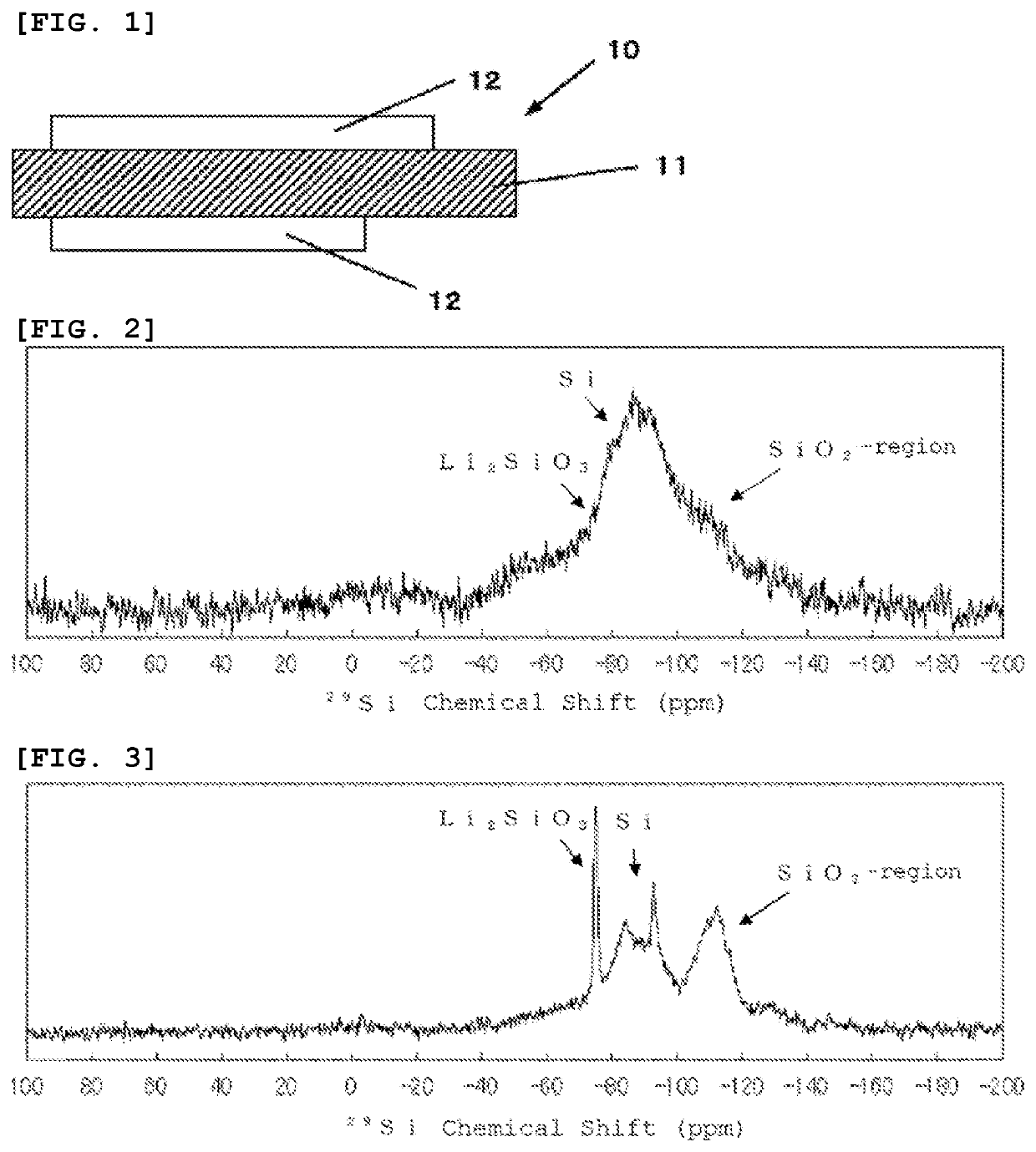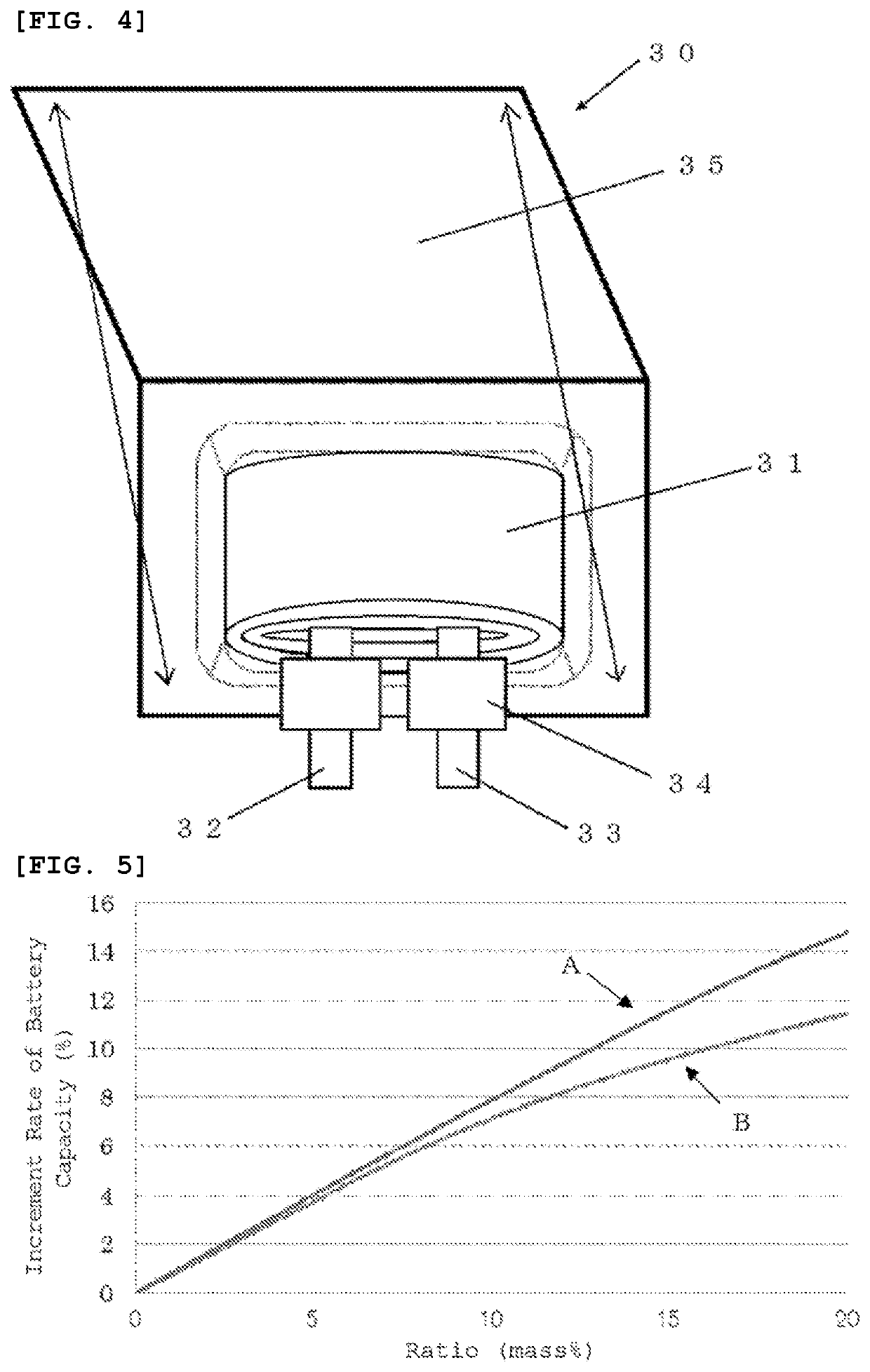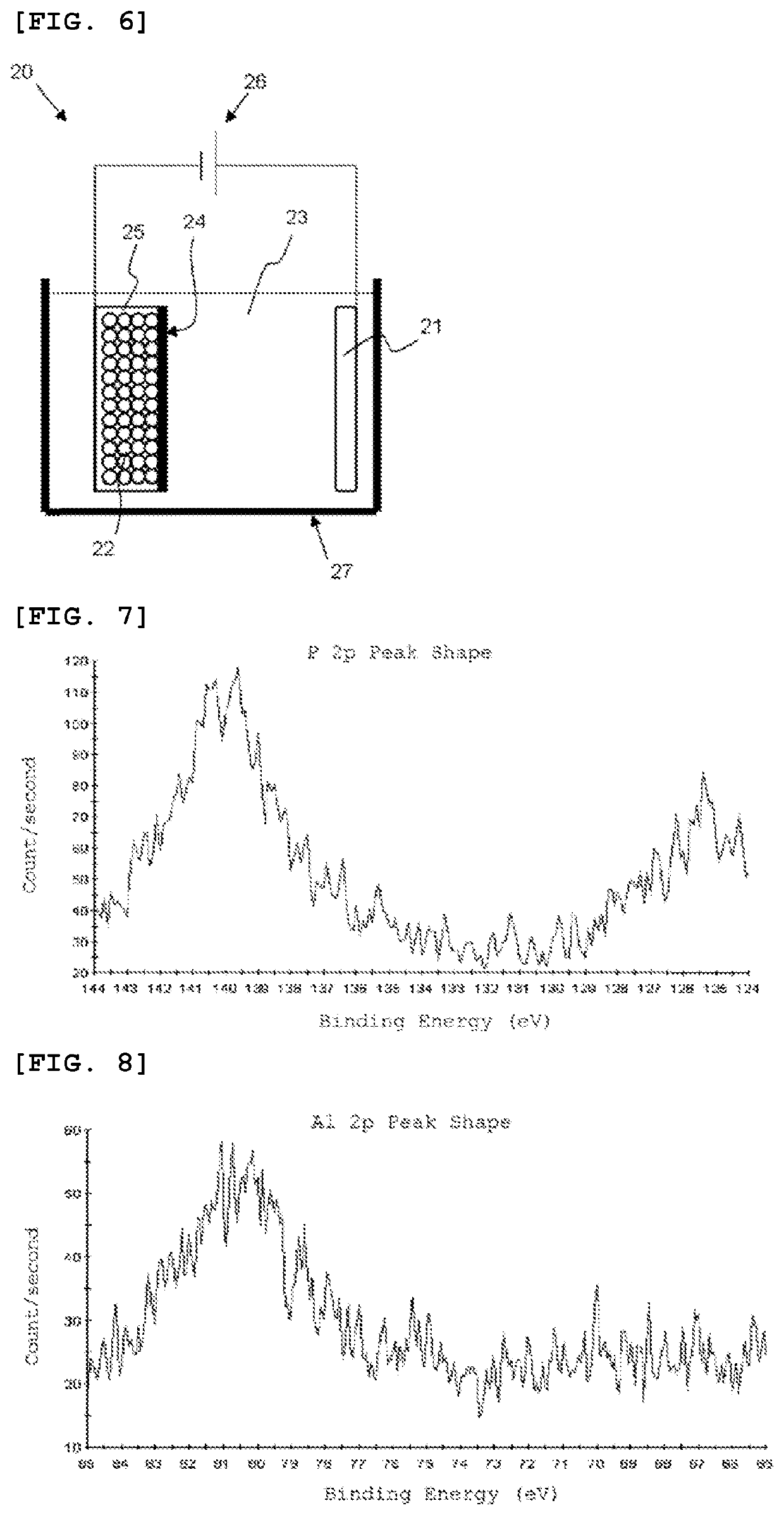Negative electrode active material, mixed negative electrode active material, and method of producing negative electrode active material
a technology of active materials and negative electrodes, which is applied in the direction of cell components, electrochemical generators, silicates, etc., can solve the problems of electrolyte consumption, and achieve the effects of favorable cycle performance and initial charge and discharge properties, excellent slurry stability in electrode production, and high capacity
- Summary
- Abstract
- Description
- Claims
- Application Information
AI Technical Summary
Benefits of technology
Problems solved by technology
Method used
Image
Examples
example 1-1
[0190]The laminate film lithium-ion secondary battery 30 shown in FIG. 4 was produced by the following procedure.
[0191]The procedure began with the production of a positive electrode. A positive-electrode mixture was prepared by mixing 95 mass % of LiNi0.7Co0.25Al0.05O of lithium-nickel-cobalt complex oxide (lithium-nickel-cobalt-aluminum complex oxide: NCA) as a positive electrode active material, 2.5 mass % of a positive electrode conductive assistant agent, and 2.5 mass % of a positive electrode binder (polyvinylidene fluoride: PVDF). The positive-electrode mixture was dispersed in an organic solvent (N-methyl-2-pyrrolidone, NMP) to form paste slurry. The slurry was applied to both surfaces of a positive electrode current collector with a coating apparatus having a die head and dried with a drying apparatus of hot-air type. The positive electrode current collector used herein had a thickness of 15 μm. The resultant was finally compressed with a roll press.
[0192]Next, a negative e...
examples 1-2 to 1-5
[0204]A secondary battery was produced as in Example 1-1 except for adjusting the oxygen amount in the bulk of the silicon compound. In this case, the oxygen amount was adjusted by changing the ratio of metallic silicon and silicon oxide in the raw material of silicon compound or heating temperature. Each “x” value of the silicon compound shown by SiOx in Examples 1-1 to 1-5 is shown in Table 1.
[0205]In this case, the negative electrode active material particles in Examples 1-1 to 1-5 had properties as described below. In the interior of silicon compound particles in the negative electrode active material particles, Li2SiO3 and Li2Si2O5 were contained. The silicon compound had a diffraction peak attributable to Si(111) crystal face in an X-ray diffraction, the half value width (2θ) of which was 2.257°, and the crystallite corresponding to the Si(111) crystal face with the size being 3.77 nm.
[0206]In each of the Examples described above, the 29Si-MAS-NMR spectrum exhibited a peak att...
examples 2-1 to 2-3
[0212]A secondary battery was produced under the same conditions as in Example 1-3 except for changing the kind of lithium silicate contained in the interior of the silicon compound particle as shown in Table 2, and the cycle performance and first efficiency were evaluated. Incidentally, in Example 2-2, the kind of lithium silicate contained in the interior of the silicon compound particle was changed as described in Table 2 by changing the modification method to an oxidation and reduction method.
[0213]That is, in Example 2-2, the silicon compound particle coated with carbon material was modified by oxidation and reduction method to insert lithium. In this case, the negative electrode active material particles containing silicon compound particles were firstly immersed into a solution (solution-A) in which lithium pieces and naphthalene of aromatic compound had been dissolved into tetrahydrofuran (hereinafter referred to as THF). This solution-A was prepared by dissolving naphthalen...
PUM
| Property | Measurement | Unit |
|---|---|---|
| binding energy | aaaaa | aaaaa |
| binding energy | aaaaa | aaaaa |
| binding energy | aaaaa | aaaaa |
Abstract
Description
Claims
Application Information
 Login to View More
Login to View More - R&D
- Intellectual Property
- Life Sciences
- Materials
- Tech Scout
- Unparalleled Data Quality
- Higher Quality Content
- 60% Fewer Hallucinations
Browse by: Latest US Patents, China's latest patents, Technical Efficacy Thesaurus, Application Domain, Technology Topic, Popular Technical Reports.
© 2025 PatSnap. All rights reserved.Legal|Privacy policy|Modern Slavery Act Transparency Statement|Sitemap|About US| Contact US: help@patsnap.com



